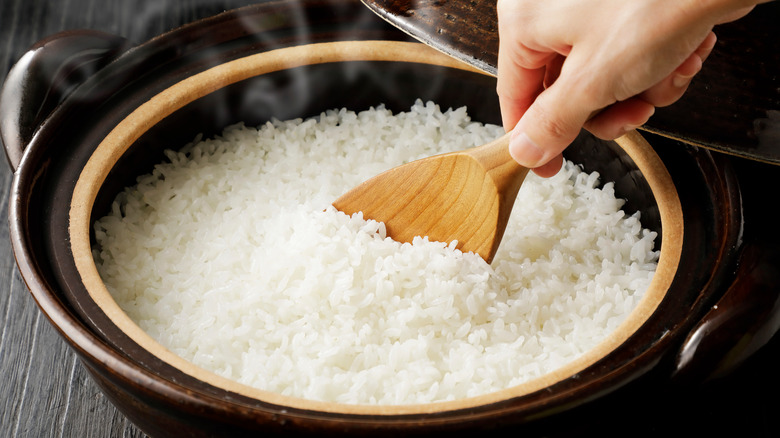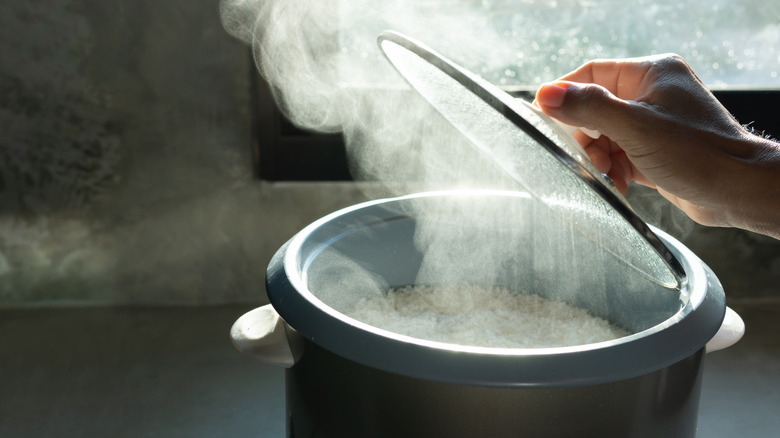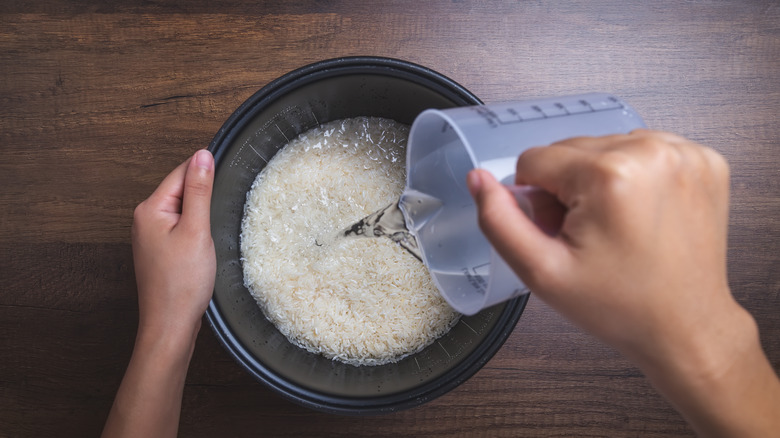Why You Need To Stop Checking Rice As It Cooks
Stop! Don't lift that lid. If you want soft, fluffy rice, trust the process and allow the grain to do its thing. Everyone makes mistakes in the kitchen, but this is a simple correction. Regardless of your technique or the type of rice you cook, there are a few grains of wisdom to discover here. It all boils down to a few things, including the most basic: stop checking the rice as it cooks.
Rice is essential for many recipes, including chicken and rice, shrimp fried rice, and wild rice stuffing. If the rice comes out hard or undercooked, it can ruin the entire rice-based dish. The most common reason undercooked rice occurs is lifting the lid before it is fully cooked. It is tempting to take a peek, especially if you cannot see through the lid. Avoid the desire to check the rice too early. Here's why and what not to do:
Stop peeking on your rice
Opening the lid prematurely on your perfect pot of rice releases all of the hot steam that allows the rice to become soft and fluffy. According to Eat This Not That, this disrupts the ratio between rice and water, resulting in hard, crunchy, or chewy rice. BBC Good Food says the general rice-to-water ratio is 1:2, with one part rice to two parts water. Follow the package directions to be sure.
Instead of lifting the lid, allow the rice to cook uninterrupted over low heat for the entire cooking time, then remove the pot from the stove; do not lift the cover yet. Allow the pot of rice to rest with the lid on for about ten minutes after removing it from the heat. After the allotted amount of time, remove the lid and fluff the rice with a fork. Voila! Now you have fluffy rice cooked to perfection.
Additional rice cooking tips
It is essential to rinse rice with clean water before cooking, author Nik Sharma explained for Food52. Not only does this remove the excess starch, which can lead to a gummy texture, but it also reduces the levels of dangerous chemicals like arsenic and lead present in rice.
Measuring the rice-to-water ratio correctly is also key. According to Sprout Monkey, an imbalance in measurements can cause soggy, watery rice or dry, thick and sticky rice. Generally, a one-to-two ratio is recommended for most rice types, but it's always smart to follow the package instructions for the type of rice you are preparing.
Salting the water is an ongoing debate: Food Network says that many chefs recommend salting the water to add flavor to the rice. Bon Appétit agrees with salting the water, explaining this prevents bland rice, but Food52 disagrees and says the seasoning step may be unnecessary. Whether you salt the water or not, or use white rice, jasmine, or basmati, keep one thing in mind: stop checking the rice while it cooks.


